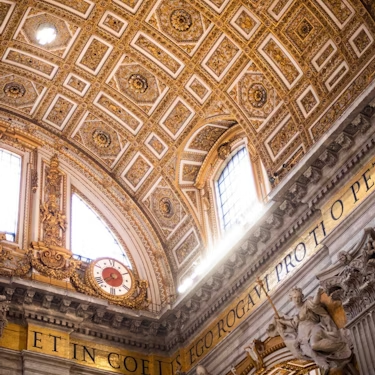More about: Basilica of St. John Lateran in Rome: Tickets and Tours
Did you know that the Basilica of St. John Lateran is the cathedral of Rome and the first church built in the city back in the fourth century? Undoubtedly, one of the essential things to see in Rome, but perhaps also one of the most unknown
Of the four major basilicas of the "Eternal City" this is the most important and until recently all the Popes were proclaimed here. Do you want to know how to visit the Basilica of St. John Lateran? Read on!
How to get tickets to the Basilica of St. John Lateran in Rome?

If you are interested in sacred art and want to know a jewel like the Basilica of St. John Lateran during your stay in Rome you are in luck because to visit it is not necessary to buy tickets but you can leave a donation.
You can access for free (except for the cloister which has a symbolic price of 2 ¤) and despite being such an important temple for the history of Catholicism, paradoxically you will not find too many visitors at the entrance because it is not well known within the circuit of churches in Rome.
Is it possible to visit the Basilica of St. John Lateran with a guided tour?
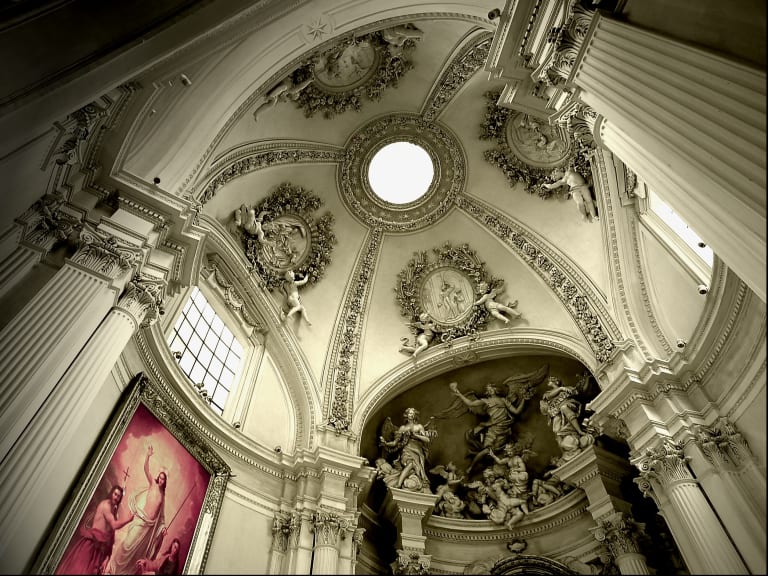
That's right! Taking a guided tour is an option I recommend you consider not only to learn in depth about the history of the Basilica of St. John Lateran and its importance within the Catholic Church and for the Popes but also to discover the spiritual background of the works of art that decorate the interior of the temple.
There are several guided tours of Rome that include the Basilica of St. John Lateran. From private tours where you will take a comprehensive tour of the monumental complex (the Basilica, the Chapel of Sancta Sanctorum, the Sanctuary of the Holy Stairs and the Cloister) to more extensive guided tours that encompass some of Rome's most emblematic basilicas, including St. John Lateran.
What are the opening hours for visiting the Basilica of St. John Lateran in Rome?

The Basilica of St. John Lateran is open from 7 AM to 6:30 PM every day of the week. However, if you want to visit the beautiful medieval cloister of the temple, you should know that it is open every day as well, but at a different time, from 9 AM to 6 PM.
When to go to San Giovanni in Laterano?
Any time of the year is a good time to visit Rome and include St. John Lateran in your tour of the city. However, during Holy Week in Rome, the Pope celebrates Holy Thursday mass inside the church, making this a very special time to visit.
How long does it take to visit the Basilica of St. John Lateran?
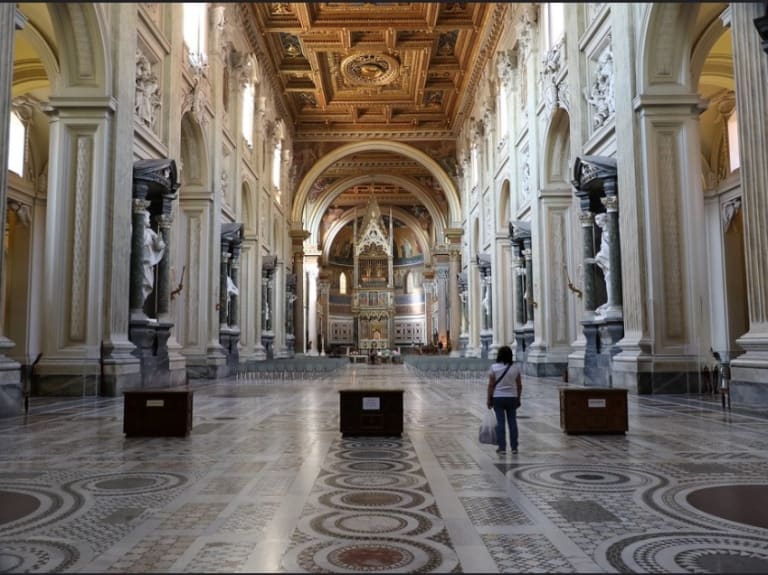
Inside the church is beautiful so I advise you to take your time to visit it calmly. At least 1 hour to be amazed by its size and to enjoy the beauty of the altar, the chapels, the cloister and all the religious art with which it is decorated, only then you will truly experience what it is like to enter the Basilica of St. John Lateran.
How to get to the Basilica of St. John Lateran?
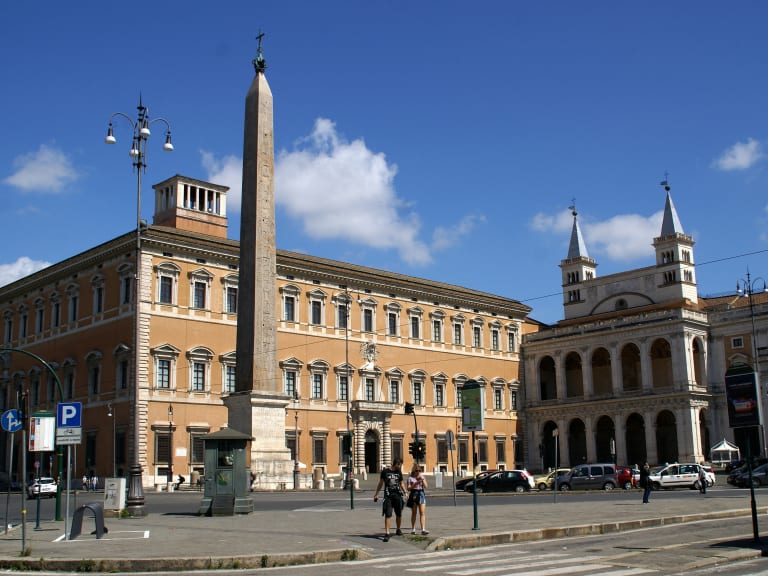
The Basilica of St. John Lateran is located in the heart of Rome, in Piazza di San Giovanni in Laterano, 4. To get there you have several options. Here are my favorites!
Taking a pleasant stroll
Walking through a city as monumental and ancient as Rome is a pleasure for the eyes. That's why I advise you to take a walk to the Basilica of St. John Lateran as it is not far from other tourist attractions such as the Basilica of San Clemente (845 meters), the Colosseum (1.3 kilometers), the Baths of Caracalla (1.3 kilometers) or the Arch of Constantine (1.4 kilometers).
Let's see how long it will take you to get to the temple from other popular tourist attractions in Rome:
- The Basilica of San Clemente: It will take you approximately 10 minutes to get there.
- The Colosseum: It will take you about 15 minutes.
- The Baths of Caracalla: It will take you about 20 minutes.
- The Arch of Constantine: It will take you about 20 minutes.
By public transport
However, if you are pressed for time and prefer to arrive as soon as possible, then I recommend taking the metro (line A, San Giovanni station) or the bus (lines 16, 81, 85, 87, 186, 650, 810 and 850).
What to see in the Basilica of St. John Lateran?
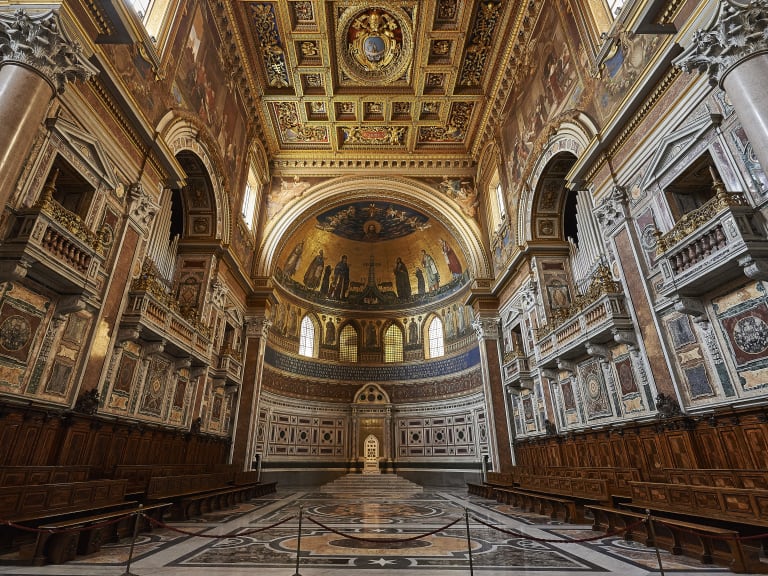
The original complex that constituted the church of St. John Lateran was almost completely demolished in the 16th century, but some remains and the ancient basilica (rebuilt by the architect Francesco Borromini in the 17th century) managed to survive. What can be seen today in this church?
Interior of the basilica
- The Altar: Located under the Gothic baldachin, the stone of the altar is said to be the same one used by St. Peter and the first Popes to celebrate Mass. In fact, it can only be used by the Supreme Pontiff and is where he celebrates mass every Holy Thursday during Holy Week in Rome.
- The Cloister: Cosmatesque style, dating from the thirteenth century and is one of the most beautiful cloisters of the churches of the city with its mosaics and spiral columns. In its center you will see a charming garden of the nineteenth century.
- Corsini Chapel: This elegant chapel houses the funeral monument of Pope Clement XII.
- Giotto's Fresco: This fresco depicts Pope Boniface VIII announcing the first jubilee of Christianity in 1300.
- The Gothic Ciborium: It is one of the few remaining vestiges in Rome from the period of the Avignon Popes.
- The tomb of Martin V: It belongs to the first pope who returned from the exile of Avignon, thus starting the Roman Renaissance. Its bronze slab is attributed to Donatello. Five other popes are also buried in the basilica.
- The ceiling frescoes: Michelangelo designed them but they were executed by his apprentice Giacomo della Porta.
Exterior of the basilica

- Main façade: It dates back to the 18th century and is an example of classicist baroque. At the top of it you will see several statues depicting Christ and St. John the Baptist and St. John the Evangelist.
- The gates: They come from the Roman Forum, specifically from the Curia of the Senate. Borromini adapted and placed them here.
- The Obelisk: It was moved here from the Circus Maximus and is the oldest and tallest in Rome.
- The Baptistery: It is the oldest baptistery in Rome, which was built by order of Emperor Constantine.
- The Lateran Palace: It was the residence of the Popes for a millennium, from the time of Constantine until the 14th century. Today it is the Vatican Historical Museum and is part of the Vatican Museums.
- Sanctuary of the Holy Staircase: It is said that St. Helena brought it to Rome in the 4th century from the Holy Land and apparently it was the staircase that Christ climbed to appear before Pontius Pilate.
- Sancta Sanctorum Chapel: After climbing the Holy Stairs you will reach the ancient private Chapel of the Popes known as Sancta Sanctorum. It is said that there is no holier place in the world because it guarded some of the most venerated relics of Christianity as the image of Christ Acheiropoieton, "not painted by human hand".
Some tips to visit the Basilica of St. John Lateran
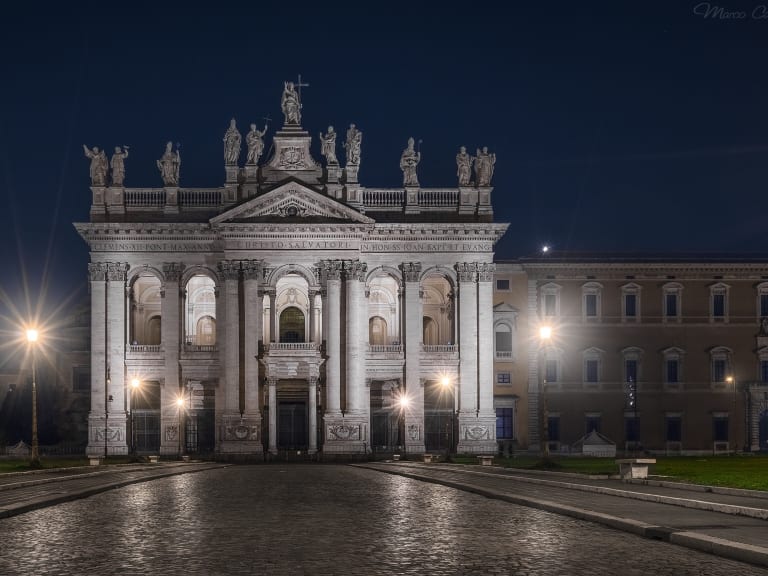
Besides being very interesting tourist attractions where you can soak up culture and learn about art and history, Rome' s cathedrals and churches are mainly sacred places where the Catholic religion is practiced.
Therefore, when visiting the Basilica of St. John Lateran you will have to follow an appropriate dress code that applies to both men and women. That is, to enter the temple you must wear clothes that cover both shoulders and knees and if you are wearing a hat or cap you will have to remove it.
Another option is to carry in your backpack a scarf or large shawl with which to cover the part of the body that at that moment you have uncovered, shoulders or legs.
As for photographs, if you want to take some inside the Basilica of St. John Lateran my recommendation is to ask first if it is possible to use the flash indoors because in some temples it is not allowed in order to protect the works of art.
What are the other Major Basilicas in Rome next to St. John Lateran that you can visit?

St. John Lateran is one of the four Major Basilicas of Rome, that is, the most important temples of Catholicism by papal designation. That is why they are worth a visit when you are in the city, especially to get the Roman Jubilee.
The other Major Basilicas are St. Peter of the Vatican (erected on the site of St. Peter's tomb), St. Paul Outside the Walls (erected on the site of St. Paul's tomb) and St. Mary Major (dedicated to the Virgin Mary on the occasion of the "miracle of the snow").
St. Peter's of the Vatican
It is the most important of the Major Basilicas and the largest temple in Christendom. The present one was commissioned by Pope Julius II on another basilica ordered to be built by Emperor Constantine in the 4th century and which stood for more than a millennium.
The dimensions of St. Peter's Basilica were so colossal that it was thought to be unfeasible. It lasted almost 200 years and involved artists of the stature of Michelangelo, Bernini, Bramante, Giacomo Della Porta and Carlo Maderno.
Inside you will find precious works of art such as Michelangelo's Pietà, Bernini's Baldachin or the statue of St. Peter on his throne by Arnolfo di Cambio. During your visit you can't miss to climb the Dome of St. Peter's Basilica- the views of Rome are breathtaking from here!
- Address: Piazza San Pietro, 00120. Vatican City.
- How to get there: Metro, line A, Ottaviano station.
St. Paul Outside the Walls
As happened with St. Peter's Basilica, the emperor Constantine also had another basilica built in the fourth century on the site of the tomb of St. Paul the Apostle, just outside Rome at that time, hence its name.
The temple became a place of pilgrimage since the first century and gradually became too small. That is why several emperors decided to replace it with a larger one that was, in fact, the largest until the construction of St. Peter's in the Vatican.
In the nineteenth century it suffered a devastating fire that destroyed much of the basilica but the whole world turned to help rebuild it through donations.
As a curiosity, in the reconstruction work an ancient sarcophagus was found with the inscription "To St. Paul, apostle and martyr" prior to the fourth century. In 2009 Carbon 14 tests were carried out on the skeletal remains inside, which concluded that they belonged to a person who lived between the first and second centuries, confirming that it was the apostle St. Paul.
- Address: Piazzale San Paolo, 1.
- How to get there: Metro, line B, Basilica San Paolo station.
Santa Maria Maggiore

Located at the top of the Esquiline Hill, Santa Maria Maggiore is the first church in the world dedicated to the Virgin Mary and the largest of them all.
The original church dates back to the 5th century, but over time it underwent several alterations that led to the present one. For this reason, the basilica has very different architectural styles (such as the Paleochristian in its floor plan, the Romanesque of its bell tower or the Baroque of some chapels) but all of them are harmoniously represented.
As a curiosity, did you know that since the 7th century Santa Maria Maggiore has housed the famous relics of the Manger brought from the Holy Land to Rome? You will find them next to the altar in the crypt of the Confession.
- Address: Piazza di Santa Maria Maggiore.
- How to get there: By subway, line A, Termini station.
















